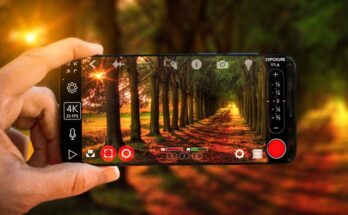Introduction
In the world of filmmaking and video editing, HDR (High Dynamic Range) cinematic editing has revolutionized the way we perceive visuals. Whether you’re a professional filmmaker or a content creator, mastering HDR editing can elevate your videos to a whole new level. This guide will walk you through the best HDR cinematic editing techniques, recommended software, and tips to achieve visually stunning results.
What is HDR Cinematic Editing?
HDR cinematic editing enhances the dynamic range of a video, making the bright areas brighter and the dark areas deeper while maintaining details in both. This results in a more realistic, visually immersive experience. The key benefits of HDR include:
- Higher contrast and brightness levels
- More vibrant and lifelike colors
- Greater depth and realism in videos
- Better performance on HDR-compatible displays
Best Software for HDR Cinematic Editing
If you want to achieve the best HDR cinematic effects, you need the right tools. Here are some of the best HDR video editing software:
1. Adobe Premiere Pro
- Supports HDR10 and Dolby Vision
- Advanced color grading tools
- Seamless integration with After Effects
2. DaVinci Resolve
- Industry-standard HDR color grading
- Professional LUT support
- High-end post-production capabilities
3. Final Cut Pro X
- Native HDR support for Apple devices
- User-friendly interface
- Optimized for macOS performance
4. Sony Vegas Pro
- HDR10 support
- Extensive video effects and transitions
- Flexible editing tools
5. Lumafusion (For Mobile Users)
- HDR editing on mobile devices
- Multi-layer video editing
- Professional-grade tools
Key Steps for HDR Cinematic Editing
1. Shooting in HDR Format
To achieve the best results in HDR cinematic editing, start with HDR footage. Use cameras that support HDR formats such as:
- 10-bit or 12-bit color depth
- RAW or LOG formats
- High dynamic range settings
2. Color Correction and Grading
Color grading is crucial in HDR editing. Follow these steps:
- Balance exposure and white balance
- Use LUTs (Look-Up Tables) for cinematic color tones
- Adjust saturation, contrast, and shadows for depth
3. Using HDR-Compatible Editing Software
Ensure your software supports HDR10, Dolby Vision, or HLG (Hybrid Log-Gamma). Enable HDR workspace settings for accurate grading.
4. Applying Cinematic Effects
- Use high-quality LUTs to achieve a cinematic look
- Add depth of field (bokeh effect)
- Apply motion blur for smooth transitions
- Enhance color contrast for drama
5. Exporting in HDR Format
When exporting your HDR video:
- Choose HDR10 or Dolby Vision profiles
- Ensure 10-bit or higher color depth
- Use HEVC (H.265) codec for high-quality compression
HDR Cinematic Editing Tips for Beginners
- Shoot in the highest possible resolution (4K or 8K)
- Use professional LUTs for a quick cinematic look
- Pay attention to lighting while shooting
- Adjust mid-tones for a balanced HDR effect
- Use color grading scopes for precise corrections
Conclusion
Mastering HDR cinematic editing takes practice, but with the right tools, techniques, and creative vision, you can create visually stunning and immersive videos. Whether you are editing for YouTube, short films, or feature-length movies, HDR can enhance the storytelling experience. Try out different software, experiment with color grading, and take your cinematic editing skills to the next level!



